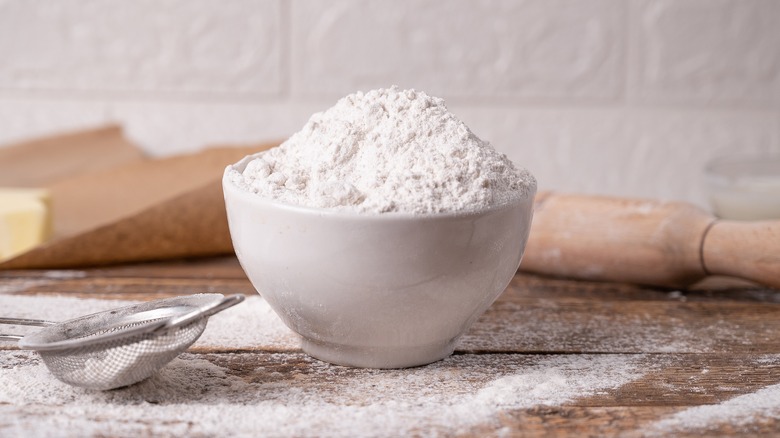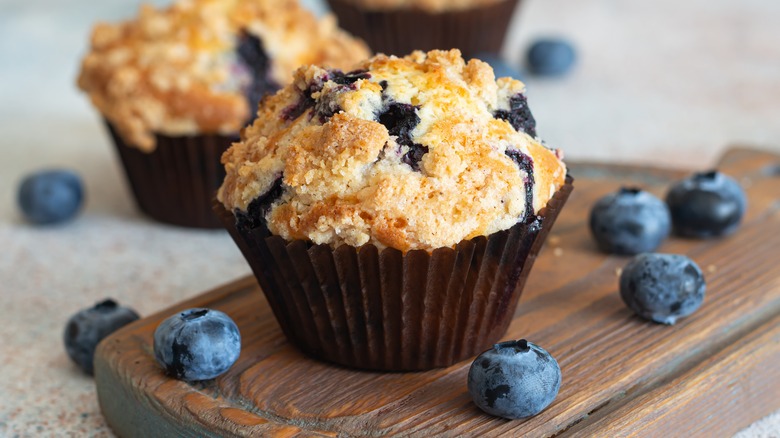The Best Way To Whisk Up Self-Rising Flour At Home
There's a reason why baking is considered a science: It involves biological, chemical, and physical reactions that occur when ingredients are mixed and heated — all to achieve a tasty result. Because of that, it's possible to substitute ingredients in baking to attain the same (or at least a similar) outcome; you just need to make sure they'll create the same chemical reaction. An excellent example is self-rising flour.
Compared to the time of its invention over 100 years ago, it's less common for modern recipes to call for self-rising flour, which is simply all-purpose flour with leavening ingredients already mixed in. You might still come across biscuit, quick bread, cupcake, and other recipes that ask for it, though. If you're in a bind and don't have any, you can combine ¼ teaspoon fine table salt and 1 ½ teaspoons baking powder with 1 cup all-purpose flour for each cup of self-rising flour that you need. Whisk the ingredients well to blend them evenly before adding them to your recipe, which will produce a consistent rise.
Store leftovers in an airtight container and use within six months, before the baking powder expires. If you don't have baking powder, you can substitute ¼ teaspoon baking soda for every 1 teaspoon of powder, which replaces the salt as well. Mix the soda with ½ cup plain yogurt or buttermilk or with ½ teaspoon lemon juice, cream of tartar, or vinegar before adding it to your recipe. Don't forget to reduce the other liquids in the recipe accordingly.
Why and when to use self-rising flour
When you work with dough or batter, how much it rises is a key part of getting the texture that you want in your baked goods. An ingredient like baking powder is instrumental in this leavening process, creating gasses in your baking mixture that expand and dissipate at hot temperatures, but leave behind an air-pocket structure. The combination of baking soda and an acidic ingredient causes the same reaction.
In self-rising flour, baking powder is already distributed throughout the product for the best and most consistent results. Because of that, it's ideal for quick-bread, biscuit, cake, cupcake, and muffin recipes, to make them even easier. It can also be used for making fluffy pancakes, scones, batters for frying meat, crumb casserole topping, pizza dough, bagels, and so much more. You can even substitute self-rising flour into recipes that don't call for it. Just make sure that the recipes only require ½ to 1 teaspoon of baking powder per cup of flour, and omit the powder plus any listed salt. In recipes that use more baking powder than that, you can add the difference.
While it can be beneficial to use extra leavening ingredients, such as adding baking soda and powder to cookies, self-rising flour isn't ideal for baked goods that need yeast, especially yeast-raised breads. Yes, yeast is a leavening agent, but you can't replace it with self-rising flour, because yeast raises baked goods through a different, non-chemical process.


